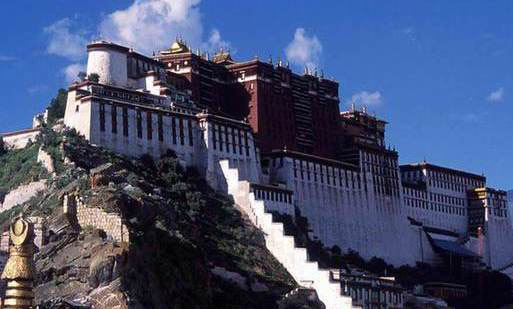Booming tourism puts heritage sites under threat
Updated: 2012-03-27 14:33
(Xinhua)
|
|||||||||
 |
|
Potala Palace in Tibet [Photo/China.org.cn] |
Booming tourism in the Tibet autonomous region is putting the preservation of its centuries-old heritage sites under unprecedented threat, according to experts.
The local tourism administration is expecting a record 10 million visitors to Tibet this year, a "real challenge" for Tenzin Namgyal, deputy chief of Tibet's cultural heritage administration.
"The boom will certainly bring wealth, but it will also put the safety of Tibet's heritage sites to the test," he said, ahead of the start of the tourist season in May.
Tibet has 4,277 major cultural heritage sites, mostly monasteries.
"These are often centuries-old mud and wood structures that are extremely vulnerable and need immediate protection," he said.
Particularly since the 2006 opening of a railway to Tibet, visitors have flocked to these monasteries, putting unprecedented pressure on the already ramshackle structures.
"Some monasteries suffer subsidence, some have deformed walls and many of the precious frescos are damaged by temperature and humidity changes and excessive exposure to flashlights," said Tenzin Namgyal.
He believes the situation could deteriorate as the number of visitors continues to rise.
Tibet has reported an average 30 percent increase in the number of visitors annually in recent years, said Tsewang Tashi, vice president of the regional federation of industry and commerce.
In 2011, nearly 8.7 million trips were made by visitors from home and abroad to Tibet.
Meanwhile, the plateau region is planning to draw 15 million visitors annually by 2015.
"Tibet is facing a dilemma: tourism authorities want more visitors and higher revenue, while we, as heritage guardians, want fewer tourists to keep the sites safer," noted Tenzin Namgyal.
The regional government, he said, has worked hard to settle on compromises that meet the demands of both sides.
One significant move was to encourage visitors to travel during the slack seasons of fall and winter. Last year, Tibet's tourism authorities and companies offered special winter tourism packages.
Meanwhile, authorities are cracking down on ticket scalpers at major destinations, including the Potala Palace.
The palace was built in the seventh century and expanded during the 17th century. It was placed on UNESCO's list of world cultural heritage sites in 1994.
This year, the palace will receive an estimated 1.3 million visitors, up from last year's 1.16 million, said Khyungda, an official with the Potala Palace administration.
Between May and October, the administration places a daily limit of 4,000 on visitor numbers for safety. This year, it has installed a 4 million yuan (US$630,000) system to monitor visitor flow.
China's central government has invested heavily in preserving heritage sites in Tibet.
In the five years from 2011 to 2015, it will spend an estimated 1.7 billion yuan on preserving Tibet's cultural heritage, at least 300 million yuan more than the total over the past three decades.

 'Taken 2' grabs movie box office crown
'Taken 2' grabs movie box office crown
 Rihanna's 'Diamonds' tops UK pop chart
Rihanna's 'Diamonds' tops UK pop chart
 Fans get look at vintage Rolling Stones
Fans get look at vintage Rolling Stones
 Celebrities attend Power of Women event
Celebrities attend Power of Women event
 Ang Lee breaks 'every rule' to make unlikely new Life of Pi film
Ang Lee breaks 'every rule' to make unlikely new Life of Pi film
 Rihanna almost thrown out of nightclub
Rihanna almost thrown out of nightclub
 'Dark Knight' wins weekend box office
'Dark Knight' wins weekend box office
 'Total Recall' stars gather in Beverly Hills
'Total Recall' stars gather in Beverly Hills
Most Viewed
Editor's Picks

|

|

|

|

|

|
Today's Top News
Health new priority for quake zone
Xi meets US top military officer
Japan's boats driven out of Diaoyu
China mulls online shopping legislation
Bird flu death toll rises to 22
Putin appoints new ambassador to China
Japanese ships blocked from Diaoyu Islands
Inspired by Guan, more Chinese pick up golf
US Weekly

|

|







